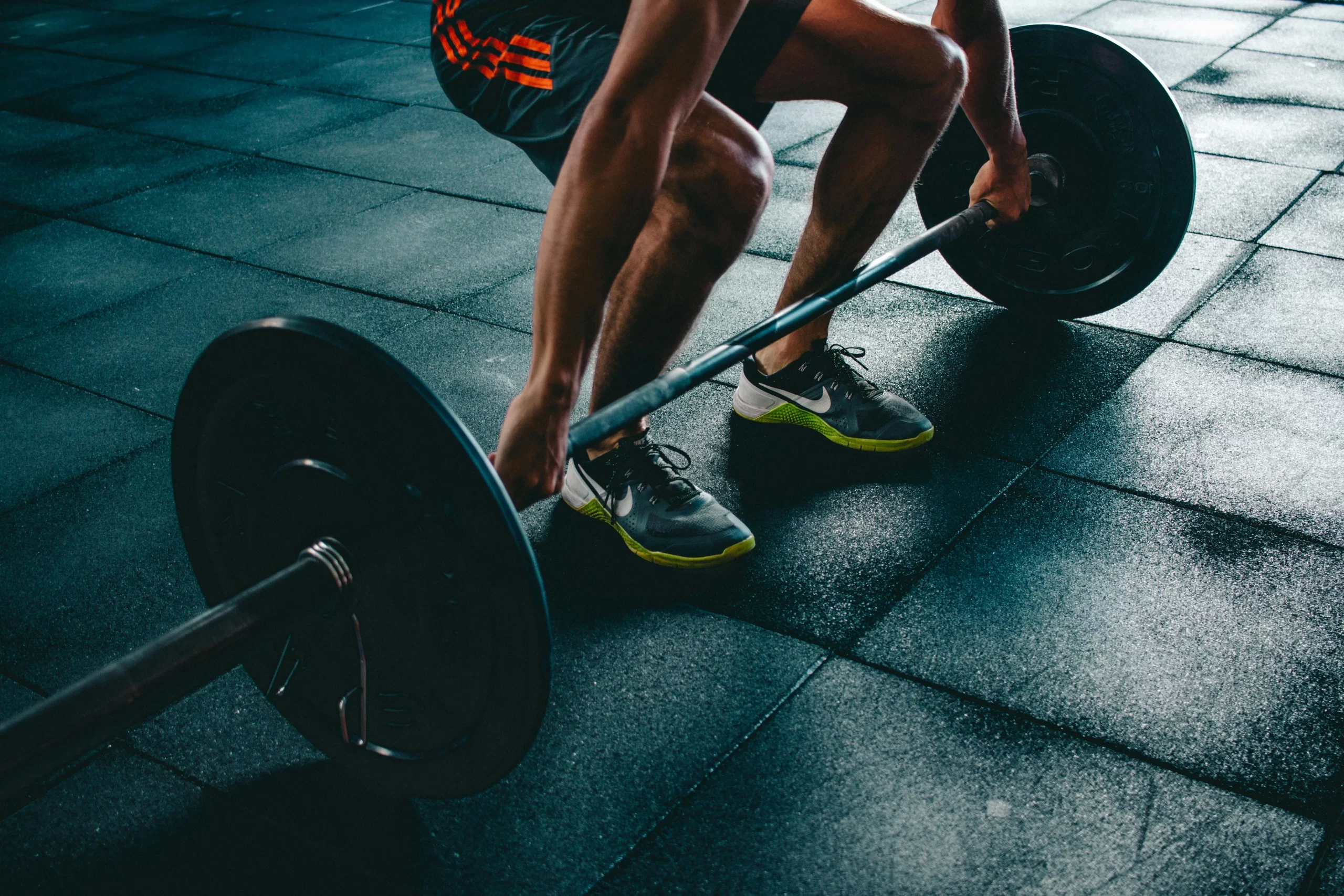Did you know that 30 minutes of high-intensity exercise can burn up to 500 calories? This surprising fact shows how important the right exercises are for effective weight loss.
30 minutes is all it takes to kickstart your metabolism! Uncover 7 fat-burning exercises that make weight loss simpler, faster, and more effective.
1. Strength training

Strength training focuses on building lean muscle through resistance exercises like weightlifting, bodyweight exercises, or resistance band workouts. It’s one of the most effective ways to increase strength and support weight loss by enhancing your metabolism.
Why it boosts metabolism:
Strength training builds lean muscle, which burns more calories even at rest, helping you manage weight over time. Additionally, the process of repairing muscle fibres after strength training creates an afterburn effect, boosting your metabolism for hours post-workout.
How to use strength training:
Incorporate exercises like squats, deadlifts, bench presses, and rows into your routine. Use the principle of progressive overload by gradually increasing the weights, repetitions, or sets over time to continually challenge your muscles. Aim for 3-4 sessions per week, focusing on different muscle groups for optimal results.
2. Circuit training
What is circuit training? Circuit training is a type of exercise that involves performing a series of different exercises in sequence with little rest in between. It combines strength and aerobic training to provide a complete workout targeting multiple muscles.
Why it increases metabolism: Circuit training is a great way to increase muscle mass and endurance. Constantly moving from one exercise to another increases your heart rate, and the combination of strength and aerobic training promotes fat-burning and muscle growth. Like HIIT, circuit training promotes EPOC, which keeps you burning calories long after your workout.
How to use circuit training: Start with circuit training, choosing exercises that work 6-8 different muscles, such as squats, push-ups, jumping jacks, and triple dips.
Perform each exercise for 30-45 seconds, then rest for 10-15 seconds. Complete the entire circuit 3-4 times, resting briefly in between.
3. Run or Jogging:
What is Run or not? Jogging or running is a common cardiovascular exercise for weight loss and improved health. Whether or not you jog, this exercise is great for burning calories and improving heart health.
Why it increases metabolism: Both jogging and running are aerobic exercises that increase your heart rate and burn calories. In addition, exercise can increase your metabolic rate for 24 hours after exercise. According to a study published in the Journal of Applied Physiology, regular running can boost your metabolism, especially for new exercisers.
How to jog or run: Start with 20-30 minutes of running or jogging, which is both endurance-testing and sustainable. To further boost your metabolism, try sprint intervals, which alternate 30-second sprints with 1-2 minutes of jogging.
4. Rowing:

What is rowing? Rowing is an exercise performed on a rowing machine. It targets major muscle groups like the back, legs, arms, and core while providing a great cardiovascular workout.
Why it improves digestion: Rowing works your upper and lower body, requires more energy, and helps burn calories. It also promotes fat loss and improves heart health. Because rowing is a complete workout, it can boost your metabolism and burn fat in the long Run.
How to incorporate rowing: Work out for 20-30 minutes on a rowing machine to boost your metabolism. Do interval training by rowing very hard for one minute, then slowly for two minutes. Repeat this throughout your workout session.
5. Skipping
What is Skipping? Jumping rope is a simple yet effective exercise that can be done anywhere. It involves jumping on a rope that vibrates at high speed beneath you. The exercise is known for improving coordination, strength, and cardiovascular endurance.
Why it boosts your metabolism: Jumping rope is the perfect exercise to increase your heart rate, burn tons of calories, and tone your fast-twitch muscles. Considered high-intensity exercise, it also increases EPOC and continues to burn calories post-exercise.
Jump rope method: Start by jumping rope at a moderate speed for 1-2 minutes, then rest for 30 seconds and repeat this cycle for 15-20 minutes. If you are a beginner, take it easy and gradually build up your endurance and speed. To increase your strength, try a double understroke, where the rope passes under your feet twice simultaneously.
6. Swimming

What is swimming? Swimming is an exercise that involves moving through water and engages almost every muscle group. Swimming can be done in a pool or open water and is known for its versatility and low speed.
Why swimming increases your metabolism: Swimming is a great way to burn calories and increase your metabolism due to water resistance. This resistance makes swimming more challenging than many other forms of exercise, resulting in a higher energy expenditure. It also works for more muscle groups, increasing muscle mass and a higher metabolic rate.
How to incorporate swimming: Aim to swim for 30-45 minutes, alternating strokes like freestyle, breaststroke, and backstroke to work different muscle groups.
Swimming steadily can burn hundreds of calories, and a slower pace speeds up your metabolism.
Aerobic exercise, including High Interval Training (HIIT) and continuous aerobic exercise, increases metabolism and accelerates fat burning.
7. Cardio workouts:
Why aerobic exercise increases metabolism: Aerobic exercise increases calorie burning during and after exercise through the EPOC (afterburn) effect, where your body burns calories at a higher rate. Additionally, regular aerobic exercise improves heart health, reduces body fat, and helps maintain lean muscle mass, thereby increasing metabolism.
How cardio works: Combining HIIT with sustained cardio, or alternating the two, provides variety and boosts fat-burning and metabolism. HIIT is particularly effective for high-calorie burning over a short period, while Continuous Cardio provides low-level sustained fat burning. Regular aerobic exercise is important to improve your overall health and achieve your weight loss goals.
Frequently Asked Questions: (FAQ)
1. What are the key benefits of high-intensity interval training (HIIT) for weight loss?
HIIT workouts are great for boosting your metabolism and burning fat. They mix short, intense exercises with rest periods. This leads to the “afterburn effect,” where your body burns calories after the workout. HIIT also increases fat oxidation and helps with long-term weight management.
2. How does strength training impact metabolic rate and weight loss?
Strength training is key for lasting weight loss. It builds lean muscle, which raises your basal metabolic rate. This means your body burns more calories, even when you’re not moving. Doing compound exercises that work many muscles at once boosts your metabolism. This supports long-term weight management.
3. What is the optimal timing for performing cardio workouts for weight loss?
The best time for cardio is usually in the morning before eating. Exercising on an empty stomach helps your body use fat for energy better. This can lead to more fat burning. However, the most important thing is to find a cardio routine you can stick to in your daily life.
4. How can combining different types of cardio workouts maximize fat burning?
Mixing up your cardio, like running, cycling, and swimming, keeps your body challenged. It helps avoid plateaus. Switching between HIIT and LISS cardio also boosts fat burning. It targets different energy systems and improves your heart health.
5. What factors influence an individual’s basal metabolic rate?
Many things affect your basal metabolic rate (BMR), like age, gender, body composition, and genetics. As you get older, your BMR often goes down. Having more lean muscle can increase your BMR. Genetics and hormones also play a role in how efficiently you burn calories.



Leave a Comment: